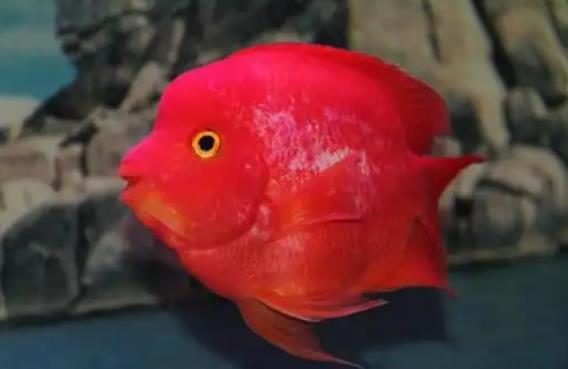The main reasons for the darkening of the tails of blood parrot cichlids include the following:
Sudden environmental changes: Blood parrot cichlids are very sensitive to environmental changes, especially to changes in water temperature. If the temperature difference exceeds 2 degrees Celsius during a water change, it will cause a stress response, resulting in the darkening of their tails. Therefore, when changing the water, the temperature difference must be well controlled, preferably not exceeding 2 degrees Celsius.

Water quality issues: Poor water quality in the fish tank is also one of the reasons for the darkening of the tails of blood parrot cichlids. Poor water quality can cause blood parrot cichlids to be infected by bacteria. Especially when there are bacteria in the water, these bacteria will parasitize on the fish's wounds or fish eggs, triggering black spot disease.
Being frightened: Blood parrot cichlids are timid. Sudden actions such as turning on the lights suddenly or knocking on the fish tank will startle them, resulting in the darkening or fading of their tails.
Fighting or getting injured: In the fish tank, blood parrot cichlids may fight for territory. During the process, they may get injured or frightened, which in turn leads to the darkening of their tails.
Solutions:
Maintain a stable environment: When changing the water, control the temperature difference well. Change one-third of the water every week, and add coarse salt to the fish tank to keep the water temperature at around 28 degrees Celsius.
Reduce external stimuli: Avoid turning on the lights suddenly or knocking on the fish tank. Place the fish tank in a quiet and dimly lit place, or cover the fish tank with a thick cloth to reduce external stimuli.
Treat black spot disease: If the blood parrot cichlids are suffering from black spot disease, they can be soaked in a 2-3% saltwater solution once a day for 5-10 minutes each time. After using it for several consecutive days, the black spots will fade or disappear.
